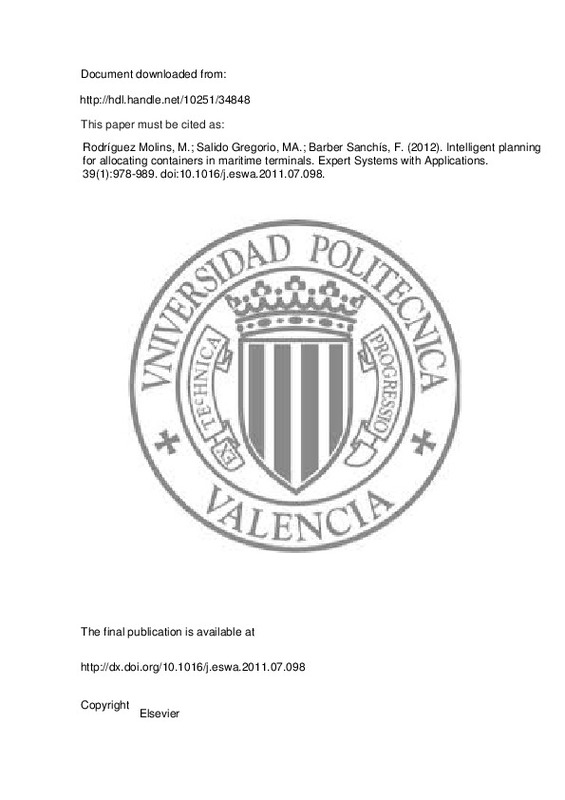JavaScript is disabled for your browser. Some features of this site may not work without it.
Buscar en RiuNet
Listar
Mi cuenta
Estadísticas
Ayuda RiuNet
Admin. UPV
Intelligent planning for allocating containers in maritime terminals
Mostrar el registro completo del ítem
Rodríguez Molins, M.; Salido Gregorio, MA.; Barber Sanchís, F. (2012). Intelligent planning for allocating containers in maritime terminals. Expert Systems with Applications. 39(1):978-989. https://doi.org/10.1016/j.eswa.2011.07.098
Por favor, use este identificador para citar o enlazar este ítem: http://hdl.handle.net/10251/34848
Ficheros en el ítem
Metadatos del ítem
| Título: | Intelligent planning for allocating containers in maritime terminals | |
| Autor: | Rodríguez Molins, Mario | |
| Entidad UPV: |
|
|
| Fecha difusión: |
|
|
| Resumen: |
Maritime container terminals are facilities where cargo containers are transshipped between ships or between ships and land vehicles (tucks or trains). These terminals involve a large number of complex and combinatorial ...[+]
|
|
| Palabras clave: |
|
|
| Derechos de uso: | Reserva de todos los derechos | |
| Fuente: |
|
|
| DOI: |
|
|
| Editorial: |
|
|
| Versión del editor: | http://dx.doi.org/10.1016/j.eswa.2011.07.098 | |
| Código del Proyecto: |
|
|
| Agradecimientos: |
This work has been partially supported by the research projects TIN2010-20976-C02-01 (Min. de Ciencia e Innovacion, Spain), P19/08 (Min. de Fomento, Spain-FEDER) and the VALi+d Program of the Conselleria d'Educacio ...[+]
|
|
| Tipo: |
|







![[Cerrado]](/themes/UPV/images/candado.png)


